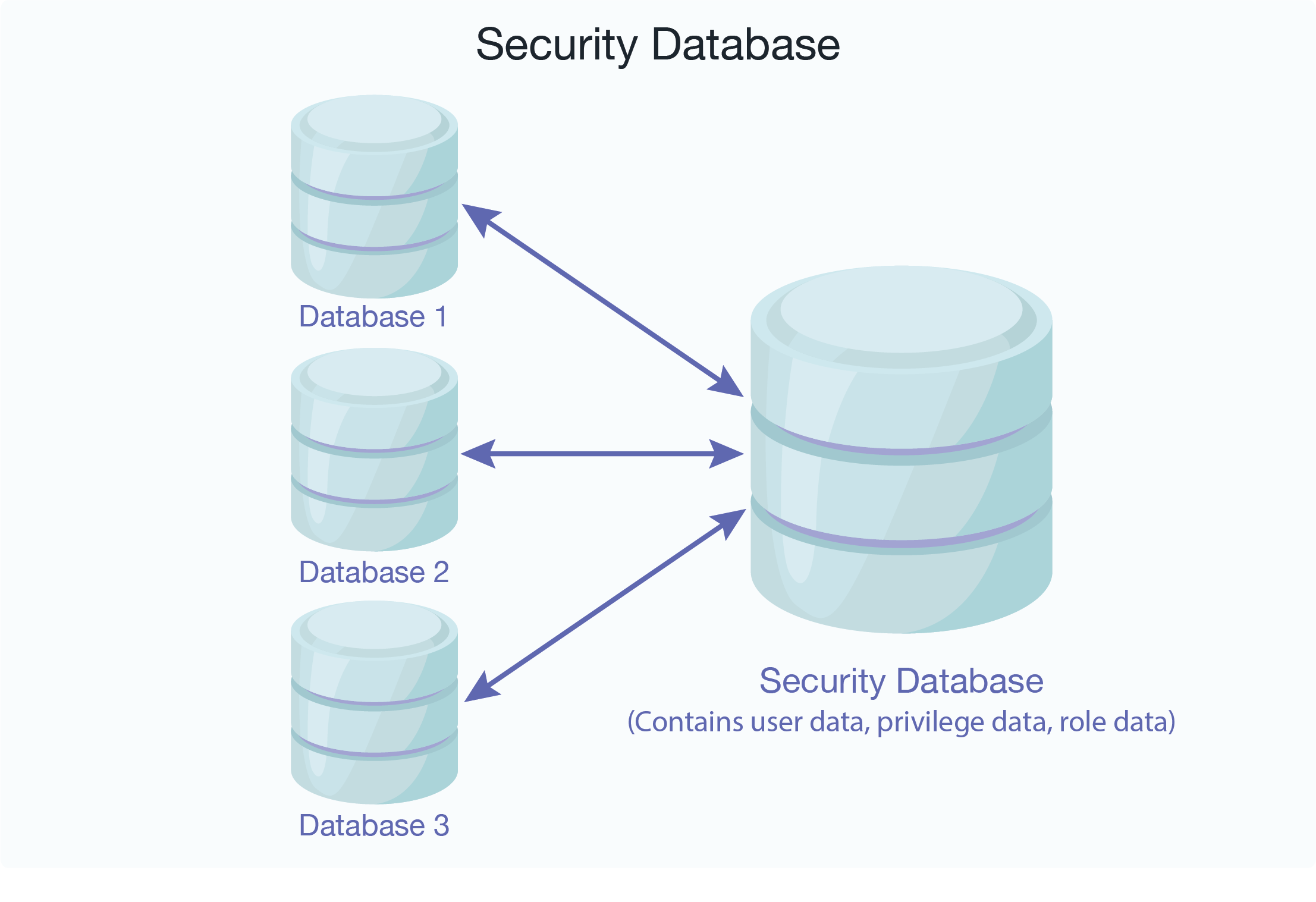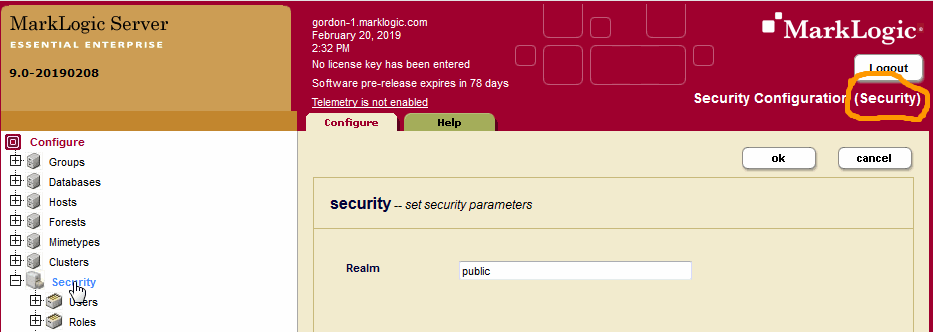Access Control with the Security Database
MarkLogic Server uses a security database to store the user data, privilege data, role data, and other security information. Each database in MarkLogic Server references a security database. A database named Security which functions as the default security database, is created as part of the installation process.
The following figure shows that many databases can be configured to use the same security database for authentication and authorization:

The security database is accessed to authenticate users and to control access to documents. For details on authentication, the security database, and ways to administer objects in the security database, see Authenticating Users and Administering Security.
There may be circumstances in which a cluster is configured with more than one Security database, such as when using database replication. When multiple Security databases are used, there should be an equal number of Admin servers with different ports, one for each Security database. Each Security database can then be upgraded by its respective Admin Interface.
The name of the Security database used by the Admin Interface is shown in the upper right corner of the Security Configuration page.
